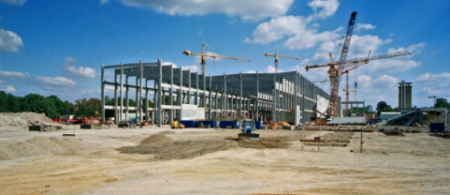According to an industry-wide survey report put out by both AEC software giant, Autodesk, and the Associated General Contractors of America (AGCA), 70 percent of construction firms are reporting they are having a hard time filling hourly craft positions that represent the bulk of the construction workforce.
Shortages of Qualified Construction Craft Workforce Abound
AGCA officials are saying that many construction firms are changing the way they operate, recruit and compensate, but cautioned that the chronic labor shortages could have significant economic impacts absent of greater investment in career and technical education.
Key Takeaways
Construction costs are likely to rise in the short term as American general contractors struggle to find and fill qualified craft positions, leading to less confidence in taking on new projects with hard-pressed labor shortages. To combat these shortages firms may employ technologies that allow them to produce with fewer people, ultimately hurting job growth prospects in the construction industry in the future.
Key findings of the report show those craft worker shortages—which includes jobs like carpenters, electricians, plumbers, and concrete workers—are most severe in the West (75 percent of firms reported trouble filling positions), while the Northeast (63 percent) had the lowest but still significant operational difficulties filling positions. The Midwest (72 percent) and South (70 percent) also reported difficulties in filling positions.
MORE: Viewpoint: Drone Revolution is Dominating Construction Projects Across Every Stage
“The ongoing labor drought continues to put pressure on the already high-risk, low-margin construction industry,” said Sarah Hodges, director of the construction business line at Autodesk, a leading 3D design, engineering, and construction software firm. “As labor challenges continue to grow, technology will play an increasingly important role supporting the existing workforce while inspiring the next generation of industry professionals.”

01 – Advanced automation technologies like GPS and laser guided equipment may displace human workers long-term if elected officials don’t do more to promote and educate the next generation of craft workers in the construction industry.
67 percent of firms report that in the next 12 months it will become even harder to find hourly craft workers.
The Answer May Become Automation-Type Technologies
While firms are taking various measures to work with the tighter than usual labor market, they are taking preemptive measures by increasing base pay rates, improving benefits to workers, and investing in training and technical education programs.
But firms are also trying to do more with limited staff levels by investing in lean-construction technologies and labor-saving techniques. Key items include off-site fabrication, virtual construction methods such as BIM, and utilizing advanced technologies like laser and GPS-guided drones and field equipment.
The report says that firms warn that if elected officials do not do more to invest in and reform programs to develop the next generation of craft workers, then the industry is likely to use labor-saving technology and techniques to meet demand, leading ultimately to fewer construction jobs in the future.
Another fall-out in the immediate from these demanding labor shortages is that construction firms are less likely to bid on new jobs fearing they do not have the manpower to meet contractual obligations. Less competitive bidding pressures will lead to increased cost of construction while labor shortages will, in the long term, impact the ability for firms to keep projects on schedule and may apply a brake on broader economic growth.
To read the full report go here.



Reader Comments
Comments for this story are closed